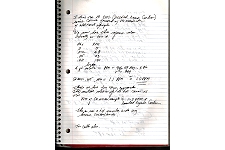A Week in the Life of Carnicom Institute
A Diary
by
Clifford E Carnicom
May 14 2016
To give the public some insight into the practical affairs of work that transpires at Carnicom Institute on a daily basis, the following diary of a representative week is offered:
Saturday, May 07, 2016:
Back in the laboratory in Idaho after a magnificent winter in the southwest portion of the country. Field studies and research continue throughout the year regardless of location, but it is good to have access to a laboratory again for several months. Spent the first half of the morning unpacking, packing and regrouping for the summer activities.
Forming a daily outline is a common task; this time the outline is for a longer time scale. Within about 20 minutes, 32 projects have been identified as topics in immediate need of research. The list is actually only partial, but it represents a good start. It is understood that completion of the list can never be achieved from this sole standpoint, but it is still valuable to lay out what needs to be done. If nothing else, it serves to help prioritize so that I can isolate the half dozen projects that are likely to show some progress during the upcoming season.
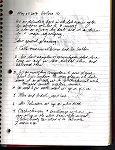 |
 |
 |
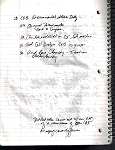 |
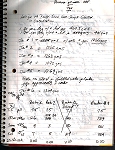 |
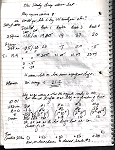 |
 |
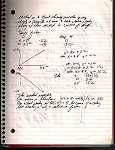 |
 |
| Lab Notes, May 07 2016 Volume 19 |
||
The list now includes, for example:
- More samples are being received from the public on a regular basis. Each sample is basically a project in its own right, as little to nothing is usually known about the source or nature of the material. Forensics are a valuable asset in this line of work. At least a half dozen on tap, and as usual I will have to zero in on those that seem most useful with environmental and health issues.
- Computer setups taking place today. A lot of specialized software operating here, with four computers now operational and dedicated to various services, projects and instruments.
- Setups today include that transfer of electrochemistry field operations to the lab environment, and some important technology that supports that work in the future. A very important field of study that has developed here, devoted strongly (but not limited to) the world of inorganic identifications (e.g., trace metals). Also a couple of primitive but useful emission spectrometers set up today; these meet another niche in the long line of spectroscopy methods that have been developed over the years (e.g., IR, Vis, UV).
- Rainfall samples are a primary focus of current work. Electrochemistry at the heart of the methods underway, but many other techniques to apply as well. Six samples on immediate tap (maybe the pun is intended). Water chemistry in general is under serious study, contaminant range on the order of PPM is on the immediate horizon. Even so-called “distilled” water is under review; it may not be as pure as we have all been led to believe. The need for the “ultra-pure” water market is now evident.
- A HEPA filter, running indoors for the last six months, is one loaded target to study. A whole world taking place in there.. There are papers to be written on the quality of indoor air (many surprises for most of us there), let alone those that have been started on the outdoor air conditions. See some of the recent papers if you want to start gettting an idea of some of the problems (hint : the EPA is included).
- Gas chromatography methods will be renewed. Young territory here, but another good niche in the world of volatiles.
- IR hair analysis, pyrolysis techniques to be renewed. Some interesting issues emerged here last year, including potential toxins to be looking at. Gas IR methods are now in place from the close of last season; an extremely valuable method.
- Bacterial electrochemistry on the agenda. Fuel cell investigations also at some point.
- IR work, revisited, is a huge plate ahead. Environmental Filament Project revisited, proteins, lipids. All papers need to regrouped, reprinted, resorted. A significant setback to the organization of the work from the blizzard that hit during the winter travel.
- Unique sample from last year needs to be revisited.
- Low tech method developed last year to estimate carbon – hydrogen ratio for organics is potentially valuable. Bring it back.
- Gel electrophoresis – DNA experiments running again. New info on DNA prep now available, hopefully some more headway now. Both DNA and protein methods desirable.
- Protein molecular weight estimate.
- Lipid molecular weight estimate; lower tech method for volatiles identified.
- Radiation measurement would be useful. No money for the meter right now. There are some initial signs within electrochemical rainfall tests that radiation may be an issue that is measurable. Fukishima?
- New pH, conductivity, ORP combined meter would be useful. No money for that right now.
- Comparison of visible light spectrometry vs. emission spectroscopy results would be valuable.
- Environmental sampling of soils would be valuable; seems more remote and less likely with time available.
- Dissection project, a couple of years on hold now. Remember the the pig lung?
- Aromatic oil studies; a whole chemistry field in itself. Time, time..
- Revisit of frequency studies and methods applied to cultures; “Rife” investigations. Lots of open territory on that one.
- CDB environmental stress study.
- Compare different potentiostats (redundancy of results always desirable).
- Chemistry lab simulator installed on 3rd terminal.
- Acid-base chemistry; comparison of titration methods, esp. electrochemical with conventional.
That is a partial list. Give me a few more lifetimes and I will try to manage it. We are running out of time to assume that business as usual is OK. Do not assume anything and we will still be behind. The list only grows, but CI keeps chipping away. The MRP is collecting data nicely.
Colorado snow sample processing started, including concentration work. Initial tests on pH, oxidation reduction potential, conductivity, TDS, and UV measurements completed. pH shows up alkaline again; seems to be a pretty strong pattern there. See the work from years ago. Relationships between oxides and hydroxides to be explored. Trace metal determinations should be helpful here. ORP an interesting topic, but less commonly used and understood. Might be valuable, but no significant result there as of yet. Index of refraction comparison also a tame issue, it seems. UV work produces highly repeatable results; leads to method to determine dissolved aromatic organic content in solution. Run references with phenols. Gilson time drift can be compensated for, as required. Only slight detection in sample apparent at this point, but method developed is extremely valuable regardless of what develops here.
The internet here is the pits, it is essentially non-functional. This has been going on since the move to the new location. It is hindering and interfering with the work, I need information now and always, lots of it, and I need it fast. This is a problem. Running on a hotspot card as best we can. Once again, the issue is money on that one; a commercial internet account is needed here – long overdue.
That is a round for today.. A couple of calls and this report will tie up a good part of tomorrow. Shutdown near 2100, on the early side no less.
Sunday, May 08, 2016:
Two extended calls today related to work projects and collaborative efforts. The calls were productive but they do consume a good chunk of the daylight hours.
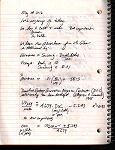 |
 |
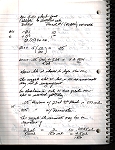 |
 |
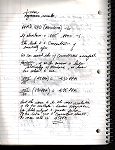 |
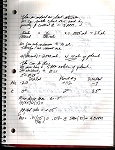 |
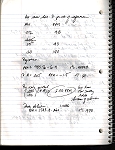 |
 |
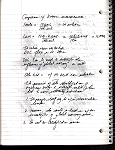 |
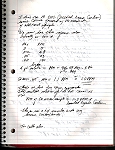 |
| Lab Notes, May 08 2016 Vol. 19 |
||||
A day of DOC (Dissolved Organic Carbon) investigations and methods development. Literature shows a strong linear relationship between UV 254 nm absorption and DOC. Standards developed at different concentrations; very strong linear relationship established and duplicated (r^2 = .999 n = 4). Good work there, UV 254 has some real value, even with limited and old equipment.
CO snowmelt sample analyzed per the standards comparison. The number is coming in low, on the order of 1-2 PPM. Dissolved Organic Carbon topic is quite a bit more relevant than we might expect, but in some unexpected ways. DOC ends up being heavily tied into the ‘global warming’ issue and the so-called carbon footprint topic – but not in a way that many of us might think. Value determined is in line with low values tracing back to 1995 research papers on DOC of 88 different natural water sources. We all get to ask what does a low DOC value in rainfall actually tell us? Suggest we start by reading the Clash of Evidence paper…
Also a strong tie in of DOC with the acid- rain issue. Again, all may not be as it appears to be or as many of us think. pH data is consistently alkaline with the rainfall samples. High DOC values apparently will sway towards the acidic side. Low DOC values (as being found here on first run) are consistent are therefore more consistent with an alkaline sway (as is also being found). Twenty to thirty years ago we would all be talking about the ‘acid-rain’ issue; notice that does not seem to be so popular anymore? The winds of environmental politics, snapchats and selfies…
As usual, the plot thickens, and DOC may end up being a more valuable tool than originally perceived. Issues of the Clash of Evidence paper, ‘global warming’ (emphasis upon quotes here), acid rain, may all come into play as we learn more here. The evidence drives the truth, not our perceptions or what we are told is the state of affairs.
The DOC project is a young one, so it is not time to read too much into the picture. Collect the data, as usual. Will reopen the Nov rainfall sample case, and examine that sample further.
CO snow melt sample continues to be concentrated, should be ready within a couple more days.
End at 0230, the wee hours.
Monday, May 09, 2016:
Morning hours occupied with the editing of two documents; the first related to a European interview and the second with respect to a collaboration project document. Time devoted to planting the seeds of future awareness and involvement; I hope that they will be fruitful in the years ahead.
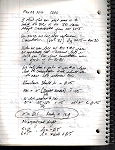 |
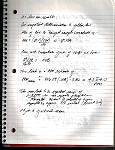 |
 |
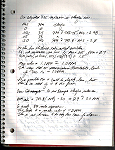 |
 |
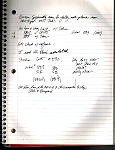 |
| Lab Notes, May 09 2016 Vol. 19 |
||
A revisit to the Idaho rain sample of Nov 2015. There is now the advantage of two distinct precipitation samples of sufficient quantity collected under known conditions over a period of time and distance. It takes approximately 3-4 days to prepare and concentrate each sample; accelerated evaporation must be done carefully and with good measurements for volume.
The DOC calibration standards are further adjusted by the carbon fraction within the phenol standard.
DOC measurement for the Idaho sample takes place. Measurements also extended to include pH, Total Dissolved Solids (TDS), conductivity, and Oxidation Reduction Potential (ORP). First indications are that the Idaho sample has foreign materials on the order of 3 times the level of the CO sample; filtration of the snow sample may also be a factor here. The CO sample evaporation process should be complete by tomorrow, slow and steady. We definitely have some soluble metallic salts in the ID sample; time will tell with CO after concentration is complete. It is difficult for commercial lab tests to be productive unless you know what to look for first; this work is geared heavily toward that end. From the November rainfall work, the list is already rather long, including metallic salts, organophosphates, pesticides, and biologicals, for example.
Beginning emission spectroscopy work in the evening hours. Development of the setup, lighting, flame source, etc. A couple of metallic salt references explored, including sodium and strontium. Variation of the spectrum with respect to molecular form quickly comes to light (more puns here without much effort) as strontium introduces the first puzzle of the process. Investigation of research papers within the fireworks world (pyrotechics) shows how the oxide forms can vary dramatically from the elemental and solution forms). Every field of study is its own ballgame, but time to get the feet wet on emission spectroscopy also. Application of the method is likely to be limited, namely because of difficulties of acquiring sufficient materials in solid form, but it is another good tool to get under the belt for certain circumstances.
Approx. shutdown at 0200, call it another day, the tortoise keeps marching…
Tuesday, May 10, 2016:
Detailed measurements today of the simpler parameters (pH, conductivity, TDS, ORP, DOC) of the three precipitation samples, one from CO, one from ID, and one from NM. Sample set is collected over 6 months of time, spans a considerable distance, and now begins to provide some valuable redundant data for comparison.
 |
 |
 |
 |
 |
 |
| Lab Notes, May 10 2016 Vol. 19 |
||
The results are quite similar with one another in a general sense. The portrait being created is one of further investigation as to metallic salt composition as well as the basis for alkalinity across all samples. The dissolved organic carbon levels are quite low in all cases; further relationships between this finding and climate/acid rain issues will be of interest if time permits.
Assessment of the rainfall samples to date indicates the following potential areas of concern and further investigation:
- Dissolved ionic materials are present at measurable levels, on the average order of 7 PPM. This is enough to warrant deeper study, as 2 PPM of Al has already been demonstrated to be out of ordinary bounds.
- Alkaline nature seems evident, hydroxides require further identification.
- Relatively low levels of dissolved organic carbon (DOC). Interesting issues arise on this with respect to global climate influence and acid-rain issues.
- From Nov work, organics and biologicals are indeed present. Further study of this as well, especially with the CO concentrate.
- Organophosphates, nicotinioids, pesticides remains candidates for further study.
Next on tap with this work: Visual analysis of concentrated samples, microscopic study, trace metal investigations (electrochemical), infra red work, and emission spectroscopy (if samples can be developed).
Certainly this one project with these three samples alone could tie me up for the next week or two, there are no shortcuts here and the work is detailed and demanding.
Wednesday, May 11, 2016:
Significant and time consuming administrative paperwork tended to today. Not sure if any time for lab will be available yet or not. Also an extended CI call again tonight. I also need to ride my bicycle soon, as I am overdue for putting around town and trail. Methinks that the ID sun has to be delivering again soon..
… It was a veeery long call tonight.
In the late hours, started the initial rainfall electrochemistry studies via voltammetry.
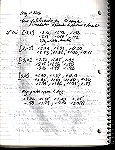 |
| Lab Notes, May 11 2016 Vol. 19 |
Thursday, May 12, 2016:
Electrochemistry (voltammetry) work all day and well into the night. Lots of steady and patient work ahead of me now. Don’t expect any daily drama, as it is all happening in the notes for the foreseeable future.
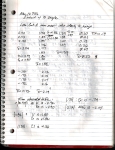 |
 |
 |
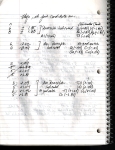 |
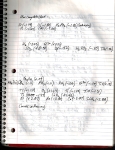 |
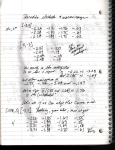 |
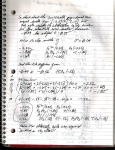 |
 |
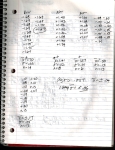 |
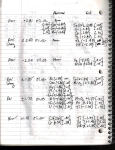 |
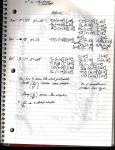 |
 |
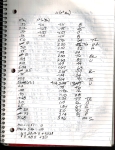 |
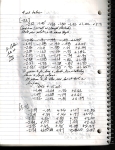 |
 |
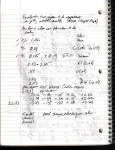 |
||||
| Lab Notes, May 12 2016 Vol. 19 |
||||
Another benefit in methods over the last couple of days. The original volume of rainfall sample required for analysis was on the order of about 100 ml (maybe a half cup or so). This was, over time, reduced to about 20 ml, which made a huge improvement in efficiency. There is now a method in place that reduces the sample size to 4 ml; this is a major improvement. Samples take time and effort and cost to collect and ship; reducing this to 4 ml makes life much easier for everyone involved. It also aids the concentration process dramatically. Not quite to micro-electrodes yet, but certainly a lot closer. Just for your info, electrodes are now small enough that individual biological cells are being investigated via electrochemistry. I am a bit more coarse than that, but major strides in sample prep reduction have now been implemented.
Friday, May 13, 2016:
And there we have it, another most un-ordinary week in the lab of CI. Most every day here is a day of discovery, questions, problems, mysteries, patience, serendipity, pursuit and, most definitely, Capricorn persistence. Leeuwenhoek did not look at things one time to be convinced, and neither do I. It is over and over and over, as there are a million ways to be tricked with what we think is real and which depends upon our senses. Anyone that thinks that science is a rote and ordained path reliant solely upon rules, dogma and certifications has missed out on the real affair. There is both wonder, challenge and creativity at every step. It is a shame that much of science has lost much of its original spirit of openness, discovery and expression. Here, it has not.
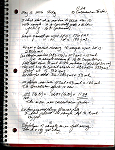 |
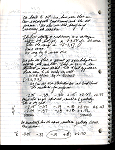 |
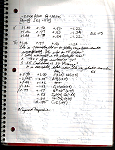 |
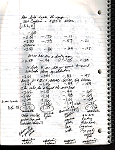 |
 |
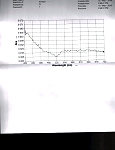 |
 |
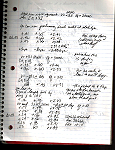 |
 |
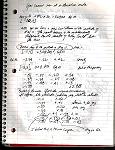 |
 |
 |
Lab Notes May 13 2016 Vol 19 |
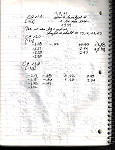 |
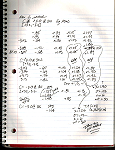 |
Another day deep in the bowels of voltammetry study today. The first consolidated pass of the Idaho rain sample has been completed; three more samples to make a review of. When that is done, I will start it all over again and repeat until reproducibility is in hand.
Most textbook examples of voltammetry usually have one, or at most two, components in the solution to examine. If only real life was so simple. The rainwater under examination indicates close to a dozen components dissolved within, and it is most certainly a very complex affair that is underway there. There are some surprises that are showing up, and the situation seems to be more involved than many of us might be aware of. When you consider the activity described within the preliminary reports published on this same sample, maybe that is a clue as to what lies ahead. Trace metals, inorganics, organics, organophosphates, neonicotinoids, halogens, radiation and biologicals is a tall order to investigate thoroughly. The overall indications are not favorable to environmental and human health. Incidentally, a radiation meter would also be helpful to CI. I will do my best with what has been granted to me, and hopefully you will get to see another paper on another day.
And by the way, I still have plans to ride my bicycle for a spell.
My best to you,
Clifford E Carnicom
May 14 2016
Born Clifford Bruce Stewart
Jan 19 1953

